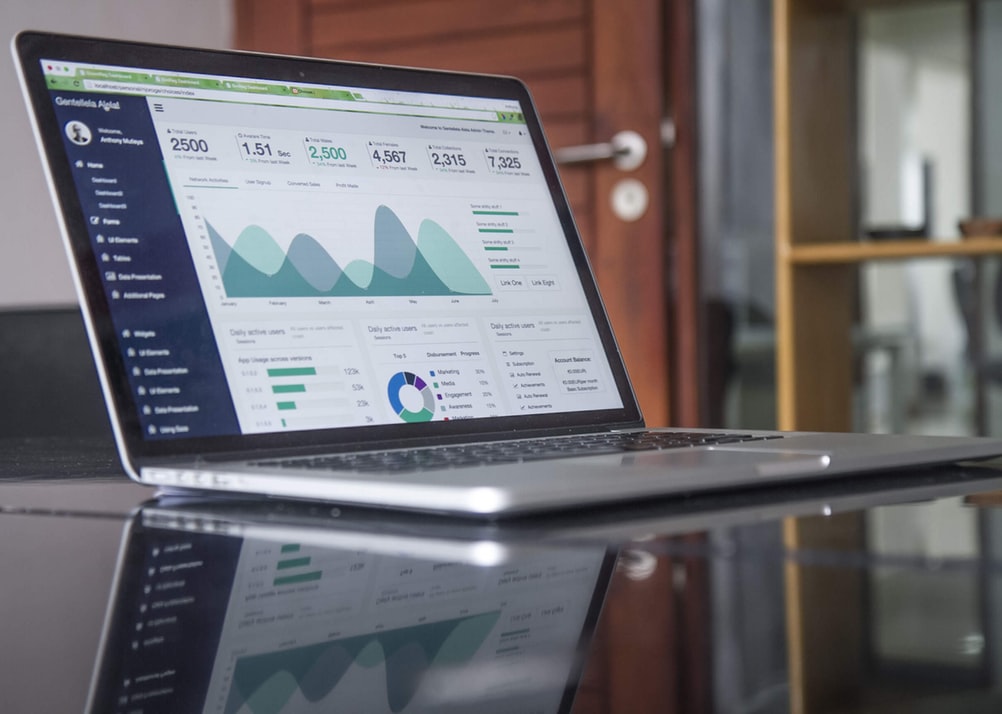Human Resources

A Beginner's Guide to HR Analytics

23 June 2020 - 4 min read
When it comes to the ins and outs of HR analytics there’s a lot to cover, but it can difficult to pinpoint where to start when there’s typically some confusion around what exactly HR analytics is and what it’s meant to do.
To save you time and to help you better understand the fundamentals, we’ve created a beginner’s guide to HR analytics to get you started on what you need to know.
Let’s dive in.

What is HR analytics?
HR analytics, by definition, is the process of collecting and analysing HR data to enhance overall organisational performance.
HR analytics – also known as people analytics, workforce analytics, or talent analytics – applies statistics and analysis of employee-related factors (i.e. recruitment and employee experience) to provide leaders with direction on how to improve business solutions.
Simply put, the data provided by HR analytics gives insight into otherwise difficult to measure employee data so that organisations can make better decisions and plan strategically for the future.
In doing so, they can better attract, manage, and retain their employees and maintain a happy, productive working environment.
Why should your business use HR analytics?
The key to understanding workforce analytics is that it’s not simply about making HR better, it’s about making the entire business better.
Yes, organisations routinely collect data, but often this collection of data goes unanalysed, making meaningful data redundant when they don’t take the opportunity to capitalise on it.
When an organisation implements HR analytics, however, it enables leaders to make stronger, evidence-based decisions in relation to their workforce so that they can better manage employees, improve work environments, and maximise employee productivity.
From recruitment and training to employee engagement, performance, compensation, people planning, and retention, the benefits of ‘big data’ can be applied to many areas within your business, ultimately transforming the efficiency of your organisation.
Aside from keeping your organisation aligned and informed, HR analytics also helps to keep your organisation competitive by looking beyond the numbers to extract critical information.
Without HR analytics, companies risk losing valued employees and potential business revenue.

What key HR metrics should you focus on?
Contrary to what some people think, HR analytics and HR metrics are not the same thing, but they do work together to provide organisations with meaningful data.
While HR analytics focuses on why something is happening and what the impact is, HR metrics focus on the what, measuring the effectiveness and efficiency of current business processes and initiatives (i.e. turnover, training, ROI) and tracking past and current data to influence future decision making.
Some key metrics your company could focus on include:
Recruitment
Tracking and measuring the time that it takes for your company to hire a new employee allows you to better understand how your recruitment team is performing. Not to mention, knowing how much time it takes to hire a new employee also helps to narrow down the cost of hiring employees, allowing your company to find areas for future cost savings.
Turnover & Retention
Measuring employee turnover can help your business discover whether your retention strategies are working. If they’re not, you can use HR analytics to better understand why and come up with suitable tactics to combat potential losses.
Employee Performance
By conducting routine appraisals and performance reviews, you can measure and track how employees are conducting themselves over set periods of time, and whether they’re likely to improve or grow within the company.
For the best results, leaders should act on the information they gather from their employees as soon as possible, such as opportunities for training. Reviews that gather dust are no good to anyone twelve months out.
Employee Absences
Time-tracking employee absences give a good indication of how efficient your current workforce is. While this metric can’t tell you how productive employees are during their working hours, it can tell you how many hours they’re putting in, helping you to identify any pitfalls in performance so that they can be addressed immediately.
Employee Engagement
It’s good to keep on top of how your employees are feeling at work through outlets such as employee surveys, for example. By tracking the employee engagement metric, you’ll gain insight into which employees are putting their best foot forward. You’ll also have opportunity to discover and fix areas where job satisfaction might waver.
HR metrics don’t tend to say much because they simply measure the difference between numbers. Once paired with people analytics though, you can track the effect, efficiency, and impact of metrics in relation to business performance and align them strategically with your organisation’s objectives.

What steps should be taken to implement HR analytics?
It’s important to remember to apply a basic outline to every HR analytics project you take on because it highlights the purpose of the analysis, the progression, and where to carry out the next steps.
While each project, challenge, and solution will be different, creating a general process will help point you in the right direction to uncovering the information you’re looking for.
If you’re still not sure how to properly implement HR analytics, have no fear! We’re making it as straightforward as possible to understand how to get HR analytics in motion.
Here are 5 steps to take in order to successfully implement and utilise workforce analytics within any organisation:
1. Understand and Define
The first step to getting started with HR analytics is having a thorough understanding of what questions you want to answer within your organisation, and to define them accordingly. Questions you might ask include:
- What is the business issue we want to address?
- What internal and external businessfactors should we be aware of?
- What are the anticipated outcomes of this data analysis?
- Will the results of this analysis lead to any significant or meaningful changes?
- Who will be impacted by the results?
- Are we asking the right questions?
2. Identify, Collect, and Cleanse
Identifying, collecting, and cleansing data to answer your questions is perhaps the most vital step to properly implementing HR analytics, but it can be a challenge. Measuring basic data is easy but tracking more complex metrics is where companies tend to struggle.
The key is to make sure that the data you have at your disposal is the right kind of data – high-quality data – collected from the appropriate sources (i.e. exit interviews or engagement surveys) and cleansed of any unnecessary and incorrect figures.
Your data collection should extend to various areas of the business, not just the area a particular HR analytics project is focused on.
Gather important metrics from finance and marketing, for example, so that you can look at numbers related to employee turnover, sales performance, money spent on training, and so on so that you can compare as necessary.
3. Analyse and Extract Data
You should take extra care to be sure that you have the right team of people with the appropriate skillset to manage, analyse, and extract your company data so that your data is being measured effectively and so your results are accurate.
Analysis in relation to HR analytics is about generating the answers your need from big data, and extraction is about determining which answers – or results – are meaningful, ultimately providing direction for future business decisions.
4. Communicate, Evaluate, and Implement
Once you have the results from an HR analytics project, you’ll want to communicate those findings with the appropriate business leaders so that they can assess their value and potentially include those findings in business operations.
When HR analytics starts producing tangible results, it’s in any organisation’s benefit to start implementing changes in order to thrive.
If, for instance, you focused on analysing employee turnover, and the data implies that your organisation’s rates are higher than the industry average, then you can look at rebuilding your workplace tactics to better retain your employees.
This could include creating more opportunity for discussions about career development in the workplace, employee benefits, or even additional training opportunities.
Whatever the case may be, to communicate effectively, you need to draw a line between your business and its HR data results to show why they’re actionable and how actioning them will benefit your business.
5. Perform Routine Analysis
it’s always best to circle back and check in on past issues to determine whether changes made are remaining effective or whether those changes are causing new issues.
HR analytics is like any other regimen, if you don’t keep on top of it, you effectively miss out on the benefits – staying in one place or running on a decline.
That’s why it’s essential to implement a routine schedule for data analysis of any current and new workforce data, so that any pressing workplace issues that can be analysed through HR data can be met with a solution.

Download Your Free CIPD Course Guide
Get information on our CIPD courses
Share this post












